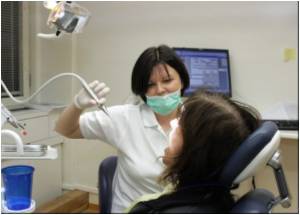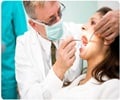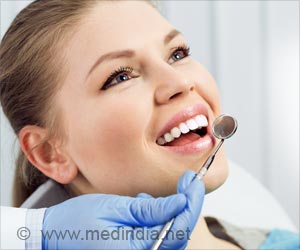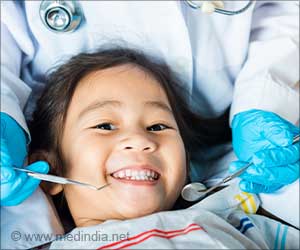Orthodontists have been advised against ordering 3-D X-ray imaging for children as a matter of course. It is unnecessary to expose young patients to unnecessary radiation.

A very small number of orthodontists utilize the 3-D imaging on a routine basis when developing a treatment plan, and this raises concerns of unnecessary radiation exposure. In contrast, the evidence summarized in Kapila’s paper suggests that 2-D imaging would suffice in most routine orthodontic cases. One of the tradeoffs for the superb 3-D images is higher radiation exposure, Kapila said.
The amount of radiation produced by 3D CBCT imaging varies substantially depending on the machine used and the field of view exposed, and some clinicians may not realize how much higher that radiation is compared to conventional radiographs. One CBCT image can emit 87 to 200 microsieverts or more compared to 4 to 40 microsieverts for an entire series of 2-D X-rays required for orthodontic diagnosis, Kapila said. Considering that the average US population is exposed to approximately 8 microsieverts of background radiation a day, 200 microsieverts equates to about 25 days worth of cosmic and terrestrial radiation.
“Most of the patients who need orthodontic treatment are young adults and pediatric patients,”said Dr. Erika Benavides, clinical assistant professor in U-M’s Department of Periodontics and Oral Medicine. Benavides is the board certified oral and maxillofacial radiologist who reads the CBCT scans taken at the U-M School of Dentistry. “Keeping in mind that the radiation received has cumulative effects, adding unnecessary radiation exposure to the patient may result in a higher biological risks, particularly in the more susceptible young children. This is why selecting the patients that would benefit the most from this additional exposure needs to be done on a case-by-case basis.”
Both Kapila and Benavides said when used judiciously, CBCT is an invaluable tool with a definite place in orthodontic treatment planning. The paper published by Kapila and his colleagues advocates “a balanced approach to utilizing CBCT in our patients,” Kapila said.
To that end, Kapila and colleagues reviewed the existing data on CBCT and found that this type of imaging is typically recommended in cases that include those with impacted teeth, temporomandibular joint disease, craniofacial abnormalities, and jaw deformities. While other patients could also benefit from 3D imaging, the decision to scan these patients should be made on a case-by-case basis after a clinical exam and evaluation of the specific patient needs, particularly when 2-D imaging has shown that addition 3-D information would result in a demonstrable benefit that would likely alter the treatment plan.
The patients who are scanned at U-M Dental School are referred after clinical evaluation by dental specialists and the area to be scanned is carefully limited, Benavides said.
Source-Medindia
 MEDINDIA
MEDINDIA


 Email
Email







